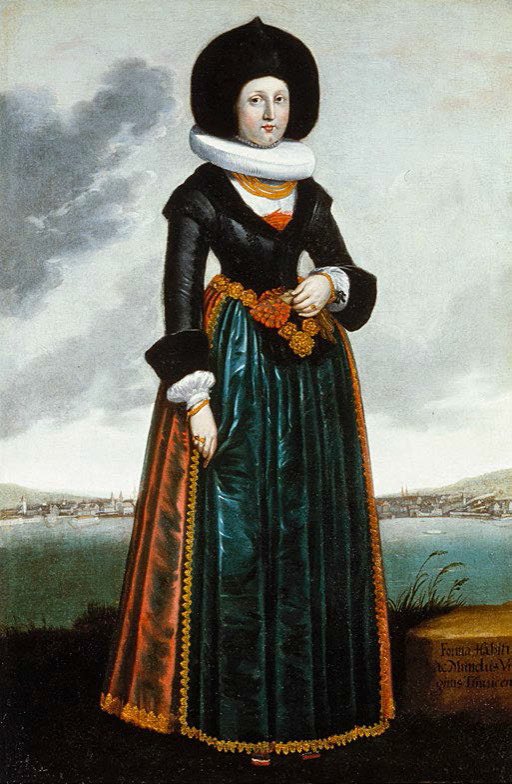Virginis Thuricensis

Conrad Meyer
Forma, Habitus ac Mundus Virginis Thuricensis, 1659
Öl auf Leinwand, 88 x 58 cm, Privatsammlung Zürich
As in much of Europe, life in reformed Zurich at the time of Conrad Meyer was characterized by a strict social order. Politics, the economy and social life were determined by the city's guild constitution, while so-called moral mandates regulated the private lives of the population down to the smallest detail. The state and church worked closely together to educate the population to lead a modest lifestyle in accordance with the Reformed faith and thus maintain public order. The focus was on work discipline, modesty and conformity. For example, the mandates were directed against lavish parties, swearing, adultery, extravagant clothing and all forms of luxury.
These strict guidelines were clearly reflected in the fashion of the time: people in Zurich dressed simply, in muted colors and with restrained decorations. Against this background, the painting by Conrad Meyer is revealing: it does not show an individual portrait, but presents a prototype of a young Zurich woman of the 17th century. What we see in this painting is revealed by the Latin inscription in the stone at the front right of the painting: "Forma, Habitus ac Mundus Virginis Thuricensis": Appearance, clothing and jewelry of the young Zurich woman. So what did a young Zurich woman wear in the middle of the 17th century?
The first thing that catches the eye is her striking ruff, a so-called millstone collar, an important part of Spanish fashion. Although this strict fashion originated in Catholic Spain, it also spread to Reformed towns such as Zurich. It is characterized by tight, high-necked cuts and dark colors. The Zurich woman in the picture is wearing a modified version with a bell-shaped skirt with a gold-colored border. White lace can be seen under her black jacket on the sleeves and at the neckline. Her head is covered by a typical fur cap, called a Hinterfür in Zurich. The woman is holding her gloves in her hands. The gold and pearl jewelry betrays the wearer's wealth despite her simple clothing.
Remarkable is the embedding of the figure against the background of a contemporary depiction of Zurich. The horizon is so low that most of it is taken up by the sky, providing the sober background typical of Meyer's conception of portraiture. The slightly arched shape of the lake gives the silhouette of the city a slight curvature, as if the curvature of the earth were visible here. The figure is embedded in its world - and that is Zurich.


